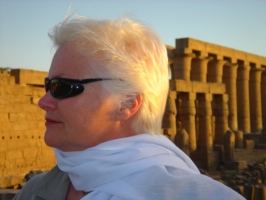
Ichthyosaurs in London’s Natural History Museum
I was a small girl in California when I’d first heard of the ichthyosaurs. My mother had read me Isabel Frances Bellous’s poem “The Ichthyosaurus.”
There once was an ichthyosaurus,
Who lived when the earth was all porous,
Be he fainted with shame
When he first heard his name,
And departed a long time before us.
My mother might have mentioned that Mary lived on a beach like I did. She mght have mentioned that Mary was not taken seriously like I sometimes thought I wasn’t. That Mary had tremendous energy and intellect. I do remember looking at the black-and-white sketch of an ichthyosaur that was in the book. From when I was very small, I’d loved black-and-white illustrations. Later, I’d even considered becoming a scientific illustrator, such as Beatrix Potter had been.
![[perslouisa.jpg]](http://1.bp.blogspot.com/_BMw1HAt_Wh8/SkNCSjg97NI/AAAAAAAACb0/hi5IRTL4ssY/s1600/perslouisa.jpg)
Captain Wentworth and Anne Elliott attend to Louisa Mulgrave, who’s just jumped from the Cobb
I had waited for a sunny day to make my visit, even though I knew that Mary had never been a fair-weather paleontologist, and she had in fact made many of her most important finds after winter storms. In December 2001, UNESCO listed the “Jurassic Coast” along Dorset and East Devon beaches, cliff,s and headlands one of the most significant Earth Science sites in the world. It is the United Kingdom’s only natural World Heritage site, and the only place in the world where 185 million years of geology in a near-continuous sequence are revealed in the cliffs. A walk along the coast is like walking through the Triassic, Jurassic, and Ceatceous periods.
Mary Anning (May 21, 1799–March 9, 1847) was a British fossil collector, dealler, and paleontologist, who became known around the world for important finds in the Jurassic marine fossil beds at Lyme Regis. Shecontributed to fundamental changes in scientific thinking about prehistoric life and the history of the Earth. Mary’s birth home is now a museum.
In the area’s Blue Lias cliffs, Mary Anning searched for fossils. When landslides exposed new fossils. these had to be collected quickly before they were washed out to sea. As it still is today, this was dangerous work, and she nearly lost her life in 1833 during a landslide that killed her dog, Tray. Walking the cliffs today, you are still confronted with detours, cautionary signs, and roped-off areas, protecting the intrepid from landslips and cave-ins.
Her discoveries included the first ichthyosaur skeleton correctly identified, which she and her brother Joseph had found when she was twelve years old. (He found the skull; she found the torso.) They also found the first two pleisiosaurs and the first pterosaur skeleton located outside Germany; and important fish fossils. She helped confirm that coprolites (known as “bezour stones” in Mary’s time) were fossilized feces, since they were so often found in fossils’ intestinal and excretory tracts. She also discovered that belemnitet fossils contained fossilized ink sacs like those of modern cephalopods.
I have admired Mary Anning much of my life, and it was a thrill to walk in her house, view down the coastline where she would have searched for paleontological treasures, and see the workmen repairing the coastline from last winter’s storms, a dangerous place during Mary’s time and still dangerous today.

Post a Comment